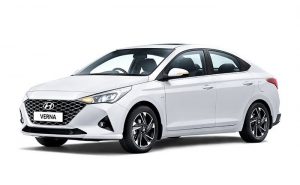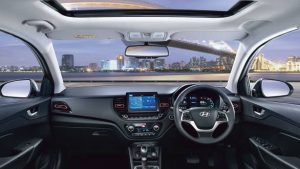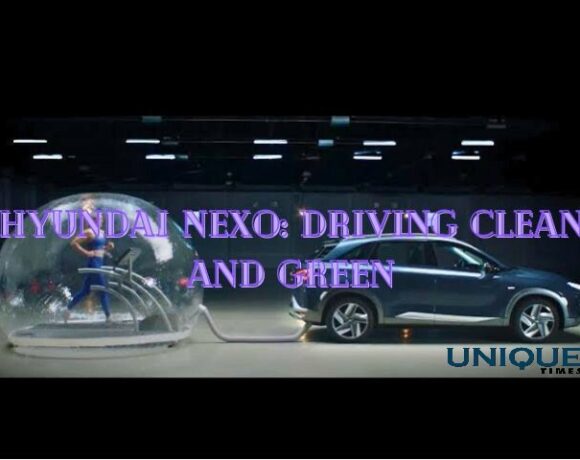Hyundai Verna

The Hyundai Verna has enjoyed its comfortable position in the upper midsize segment for quite some time amongst capable competition. Three years into this generation’s life, it is time for the midlife revamp and as with every Verna facelift before, Hyundai likes to do things properly. The new 2020 Verna gets refreshed styling, more features and more importantly, a new 1L turbo petrol engine in a segment where 1.5 or 1.6 litre engines used to be the norm. Before you dismiss it off for something unexciting, let me tell you that the new engine is more powerful, more fuel efficient and costs less to insure than the old 1.6. But we will get to all that in a bit.
The Verna has one of the most balanced looking designs in its class and with the facelift, it looks even more aggressive especially in the sportier Turbo GDI variant we tested. The front-end styling is all new, along with new headlamps, new bumper and larger glossy black grille (black chrome for other variants), all intersecting into one another to create a striking face. The car looks like the current global designs from Hyundai. The glossy black mirrors and newer alloy wheels and a raised ride height are what you notice from the sides. When you get to the rear, the tail lamps are new and there is a new bumper design with a new diffuser look and square exhaust tips finished in chrome. The bumper also has a halftone pattern emerging from the black trims on the sides a detail that may polarize opinion. Overall, the styling has got better and more modern and upmarket which is not bad for a facelift.

The interior is more or less similar to what it used to be. The shape of the dashboard and its layout are unchanged but it feels improved with the addition of small elements. The infotainment screen has grown in size and sticks out a little, since it can no longer sit flush between the vents. The fully digital instrument console with reverse tachometer isn’t the easiest to comprehend, and reminds you of the one on a modern day BMW. There are red highlights on the AC vents, red stitching on the seats etc to tell you this is the sportier variant. And the turbo petrol variant gets all black cabin which looks nice. The Verna’s ventilated front seats are super comfy to sit on, especially on a hot day. The car isn’t the most spacious in its class and that’s evident in the rear, where it falls short on legroom and headroom. It offers good support and a perfect back rest angle though, and short people won’t complain at all. The Verna comes loaded with features like LED headlamps, sunroof, wireless charging, BlueLink connected car features, cruise control, ESP, six airbags, front rear parking sensors, a hands-free boot release etc.
The new 1.0litre, direct injection, 3 cylinder turbo petrol with 120bhp and 172Nm is the same one we get in the Venue. In the Verna, this only be had with a seven speed dual clutch automatic, though the other 1.5 litre petrol and diesel engine options come in both manual and auto. The engine is refined for a three cylinder at idle and also on the move, but you can sometimes feel the lack of a fourth cylinder. It has a bit of turbo lag, but is linear for most part and you get strong midrange performance than the naturally aspirated petrol version. It feels quite smooth-revving and can be quite energetic near the top end.

The dual clutch automatic makes it easy to drive and coupled with the small engine, returns very good fuel efficiency if you drive with a light foot. You might be starting off in second gear every time and the additional punch a torque convertor automatic would have provided is missing here, but the gearbox is smooth in the way it upshifts. There is a manual mode and even paddle shifters on the steering, if you want to change gears yourself but the auto mode is good enough for most occasions. It is not as enthusiastic as the ones in Volkswagens during downshifts, but that could also be in the interests of longevity. Also the clutch engagement is very progressive and jerk free.
The Verna has a suspension setup that is tuned towards ride quality. It feels good on bad roads, gives a comfy ride over long distances and normal people would be happy with it. Hyundai says they have worked on the suspension setup for the facelift. The steering feels a bit better than it used to and there are now rear disc brakes for better stopping power. We would prefer a bit more front-end grip and a more engaging drive to suit the sporty engine and gearbox combo, though.
As far as facelifts go, the 2020 Verna is a thorough update. Rs.13.99 lakh ex-showroom for this variant we tested seems like on the higher side, but there is a lot more on offer than before. It gets refreshed styling, new engines across the range and reworked suspension. The new features are a welcome addition and makes the car feel much more in tune with the times. The competition in this segment is sure to get a lot hotter in the months to come.
Pic Courtesy: google/ images are subject to copyright








